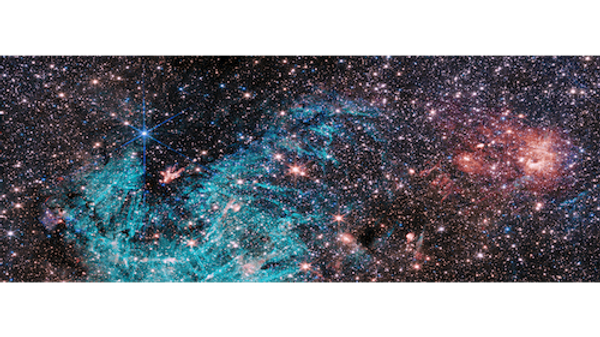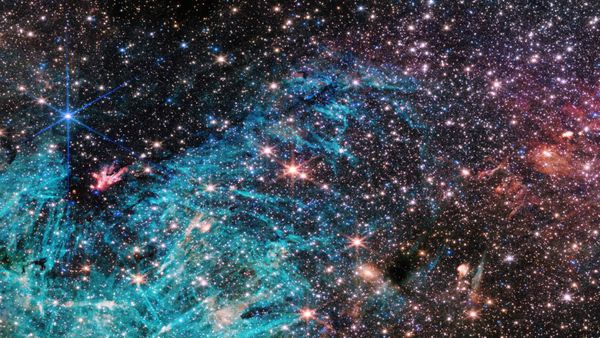
A new photo from the James Webb Space Telescope of the deep center of the Milky Way highlights never-before-features that have yet to be scientifically explained. Specifically, JWST narrowed in on the region called Sagittarius C (Sgr C), which is about 300 light-years away from Sagittarius A*, the supermassive black hole at the Milky Way’s center. The unprecedented detail casts the region in a new light to astronomers, allowing them to study it in ways that weren't possible before.
Astronomers say the level of resolution is allowing them to see new features for the very first time, like how the galactic center is actually a very crowded place with around 500,000 stars — including a cluster of protostars, which are stars that are still forming. At the heart of this cluster is a previously known massive protostar that is 30 times the mass of our own Sun. JWST’s NIRCam (Near-Infrared Camera) instrument also captured large-scale emission from ionized hydrogen bordering the lower side of an infrared-dark cloud. Astronomers say they are excited to dig in, and hope this new image will lead to unprecedented information on how stars form.
“There’s never been any infrared data on this region with the level of resolution and sensitivity we get with Webb, so we are seeing lots of features here for the first time,” said the observation team’s principal investigator Samuel Crowe, in a media statement. “The image from Webb is stunning, and the science we will get from it is even better.”










